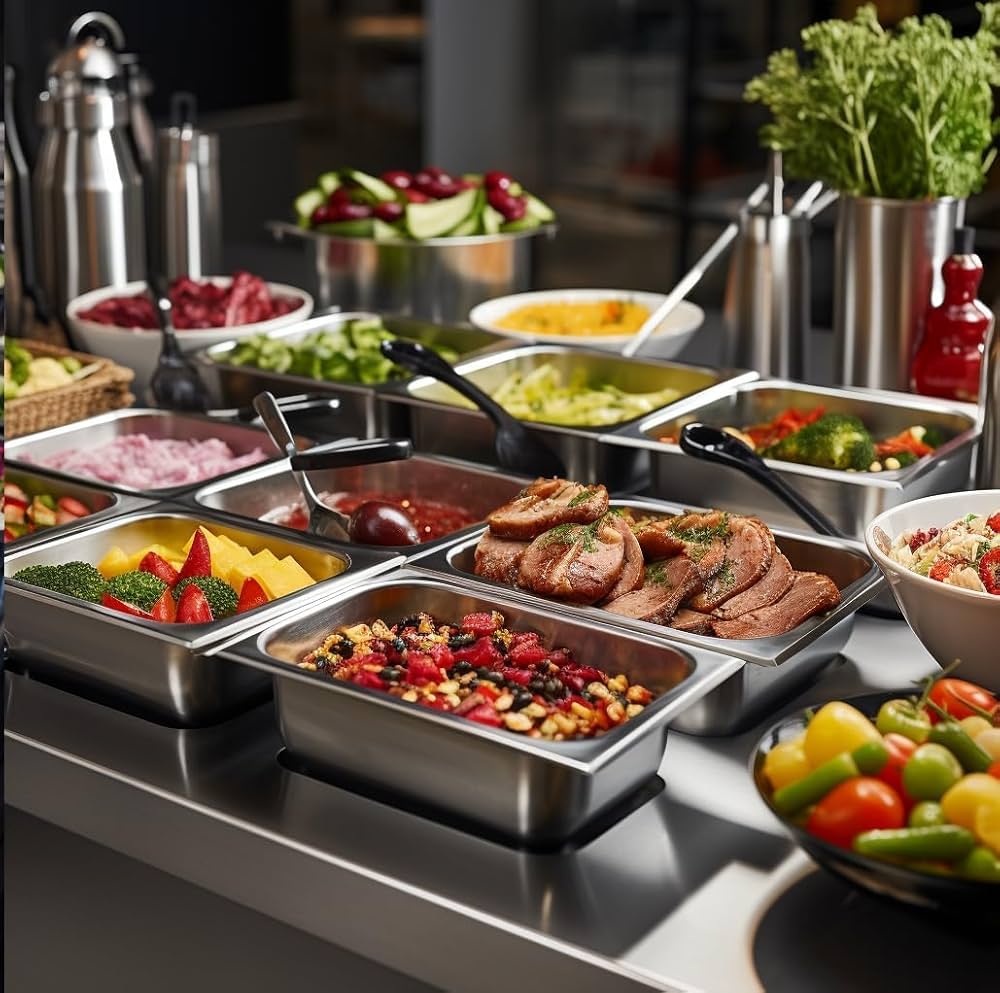
How To Identify GN Containers Designed For Specific Uses: Cold Storage, Heating, And Serving
Finding the right GN container for cold storage, heating, or serving is key to maintaining efficiency and quality in your...

Get 20€ off on your first order!
When working on construction sites, lighting is essential for safety, efficiency, and productivity. Headlamps, specifically designed for industrial and construction use, play a critical role by providing reliable, hands-free illumination. Selecting a suitable headlamp for construction requires understanding the specific requirements of the job, European safety standards, and the features that impact a headlamp’s performance and durability in demanding conditions.
If you’re in the market for headlamps, this article should help you make an informed decision that will improve productivity and safety on the job site.
Headlamps provide hands-free lighting, essential in construction for several reasons:
Choosing the right headlamp requires careful assessment of several key factors. Here’s what to look for:
Lumens are used to measure how bright a headlamp is by showing how much light it gives off. A bigger lumen count is usually a good thing in a construction setting. However, it’s essential to choose a lumen level appropriate for the task and setting:
How far the light goes is called the beam distance. You can use both spot beams and flood beams for building. Spot beams focus light over a long distance, while flood beams spread light out over a wide area. A lot of headlamps have two beams, so workers can choose between narrow and wide beams based on the job.
Headlamps for construction need to have a long-lasting battery to avoid frequent recharging or replacements. Battery types vary, each with advantages:
When evaluating runtime, consider how long the headlamp will be needed during a typical shift and whether recharging facilities are available on site. Many construction-grade headlamps have a runtime of 8–12 hours on medium settings, suitable for a full working day.
Since construction workers have to wear headlamps for long amounts of time, comfort is very important. Headbands that are adjustable can be changed to fit different sized heads or caps. Some headlamps have padding that takes pressure off the face and makes the whole experience more comfortable.
If you wear a helmet, be sure the headlamp fits a helmet mount. Several types are made especially to fit tightly to helmets or hard hats, therefore preserving stability during strenuous exercise.
On construction sites, workers are exposed to water, dust, and accidents. In these settings, durability is very important, and a good construction headlamp should be able to handle rough circumstances. Try to find models that have
Several sophisticated characteristics might increase the headlamps for construction’s performance and practicality:
Different tasks require different light intensities. Many headlamps come with multiple brightness settings, allowing workers to adjust the light according to the task, saving battery life when lower settings suffice.
You can work at night with some torches that have extra light modes, like red or blue, that don’t bother people nearby or make it harder to see. You don’t have to have this feature for all building work, but it could be helpful for some jobs that need to be done at night.
Headlamps with adjustable tilt allow workers to direct light at various angles without changing their head position. This flexibility is beneficial when examining different levels, such as floors and ceilings, without needing to crouch or shift positions.
Those who operate in very hot or cold environments may think about investing in a dual-temperature light. The use of headlamps with temperature-resistant components guarantees consistent performance, which is especially important on construction sites where temperatures can change substantially from season to season, particularly when working outside.
Headlamps used in construction in Europe may need to comply with specific regulations to ensure safety and quality. Key standards to be aware of include:
Choosing a headlamp that meets these certifications can be crucial not only for compliance but also for worker safety and equipment longevity.
Regular care is important if you want your headlamp to last as long as possible and keep working well:
Choosing the right headlamp for construction work requires an understanding of both the technical specifications and the specific needs of the job. Brightness, beam quality, battery type, durability, and comfort are crucial factors. Additionally, compliance with European safety standards ensures that your equipment meets required benchmarks for safety and quality.
With careful selection and maintenance, a well-chosen headlamp can enhance productivity and safety on construction sites, making it an invaluable tool for workers. Prioritize features that match the demands of your work environment to find a headlamp that supports safe, efficient, and reliable construction work.
Thank you! You've signed up for our newsletter.



















Finding the right GN container for cold storage, heating, or serving is key to maintaining efficiency and quality in your...

Are you struggling to decide between paper, plastic, or compostable disposable plates? The material you choose directly impacts your events...

Looking for the right Food Service Supplies for your business? Whether you’re in food service, catering, or hospitality, this guide...

Finding the right GN container for cold storage, heating, or serving is key to maintaining efficiency and quality in your...

Are you struggling to decide between paper, plastic, or compostable disposable plates? The material you choose directly impacts your events...

Looking for the right Food Service Supplies for your business? Whether you’re in food service, catering, or hospitality, this guide...
Get 20€ off on your first order!
Save 30% by buying directly from brands, and get an extra 10€ off orders over €100
Save 30% by buying directly form brands, and get an extra 10€ off orders over €100